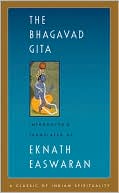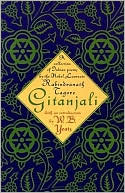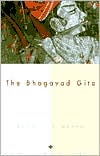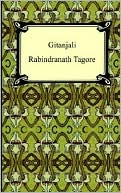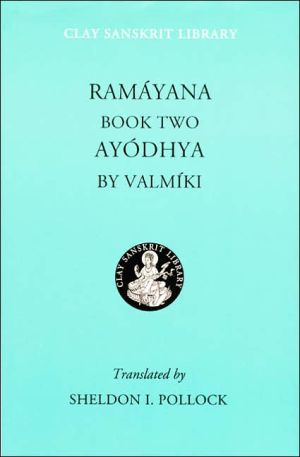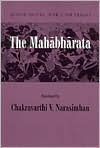Birth of Kumara
This court epic describes events leading up to the birth of Kumára, the war god who will defeat the demon Táraka. The gods try to use Kama, the Indian Cupid, to make the ascetic god Shiva fall in love with the daughter of the Himalaya mountain. Kama fails, and is burnt to ashes by the angry Shiva. Then Parvati, the daughter of the mountain, herself turns to asceticism to win the husband she longs for. She is successful, and the climax of the poem is the marriage and lovemaking of Shiva and...
Search in google:
This court epic describes events leading up to the birth of Kumára, the war god who will defeat the demon Táraka. The gods try to use Kama, the Indian Cupid, to make the ascetic god Shiva fall in love with the daughter of the Himalaya mountain. Kama fails, and is burnt to ashes by the angry Shiva. Then Parvati, the daughter of the mountain, herself turns to asceticism to win the husband she longs for. She is successful, and the climax of the poem is the marriage and lovemaking of Shiva and Parvati, parents of the universe.The greatest long poem in classical Sanskrit, by the greatest poet of the language, Kali·dasa's The Birth of Kumára is not exactly a love story but a paradigm of inevitable union between male and female, played out on the immense scale of supreme divinity. In this court-epic, the events are described leading up to but not including the birth of Kumára, the war god destined to defeat the demon Táraka.Co-published by New York University Press and the JJC FoundationFor more on this title and other titles in the Clay Sanskrit series, please visit http://www.claysanskritlibrary.orgTimes Higher Education Supplement"A handsome new series of dual-language Sanskrit texts.... . No effort has been spared to make these little volumes as attractive as possible to readers."
\ From the Publisher“The books line up on my shelf like bright Bodhisattvas ready to take tough questions or keep quiet company. They stake out a vast territory, with works from two millennia in multiple genres: aphorism, lyric, epic, theater, and romance.”\ -Willis G. Regier,The Chronicle Review\ “No effort has been spared to make these little volumes as attractive as possible to readers: the paper is of high quality, the typesetting immaculate. The founders of the series are John and Jennifer Clay, and Sanskritists can only thank them for an initiative intended to make the classics of an ancient Indian language accessible to a modern international audience.”-The Times Higher Education Supplement\ ,\ “The Clay Sanskrit Library represents one of the most admirable publishing projects now afoot. . . . Anyone who loves the look and feel and heft of books will delight in these elegant little volumes.”-New Criterion\ ,\ “Published in the geek-chic format.”\ -BookForum\ ,\ “Very few collections of Sanskrit deep enough for research are housed anywhere in North America. Now, twenty-five hundred years after the death of Shakyamuni Buddha, the ambitious Clay Sanskrit Library may remedy this state of affairs.”\ -Tricycle\ ,\ \ \ \ \ \ The New Criterion"A marvelous new venture. Modeled on the Loeb Library of Greek and Latin classics, the Clay Sanskrit Library presents masterpieces of Sanskrit poetry, drama, and prose in a dual language format... one of the most admirable publishing projects now afoot."\ \ \ Tricycle magazine"Very few collections of Sanskrit deep enough for research are housed anywhere in North America. Now, twenty-five hundred years after the death of Shakyamuni Buddha, the ambitious Clay Sanskrit Library may remedy this state of affairs...a good place to experience some deeply human poetry."\ \ \ \ \ Times Higher Education Supplement"A handsome new series of dual-language Sanskrit texts.... . No effort has been spared to make these little volumes as attractive as possible to readers."\ \ \ \ \ East-West Times"The texts reflect the vibrant literary culture of the classical Sanskrit period, taking readers on an adventurous journey through the palaces and gardens of ancient India."\ \

